5 Days 4 Nights
Daily Tour
50 people
___
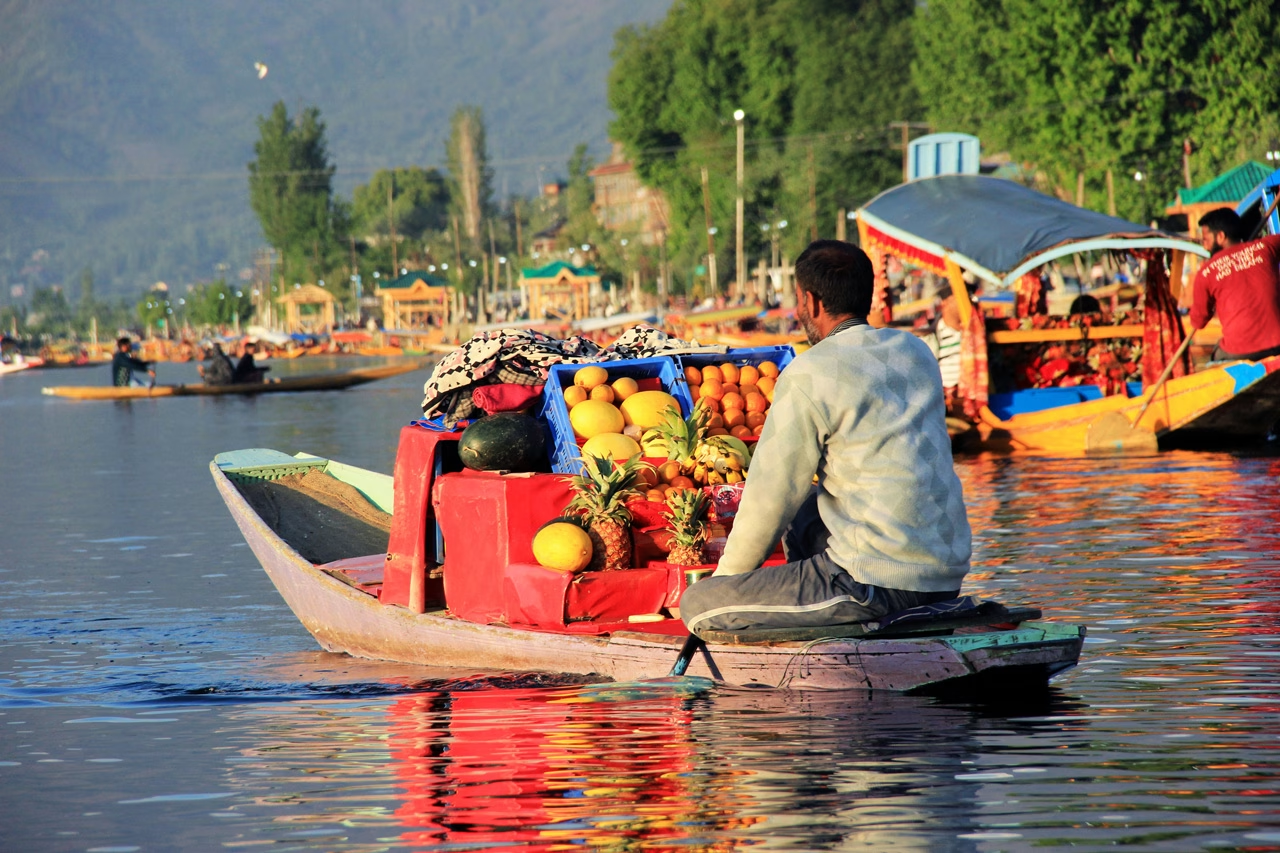
Upon your arrival at Srinagar airport, our vehicle will be ready to take you to Gulmarg, located 59 km from Srinagar at 2650 meters. After checking into your accommodation, you will head out with your guide to enjoy thrilling activities and adventures in Gulmarg. Meals: Dinner Night: Stay at the Hotel at Gulmarg
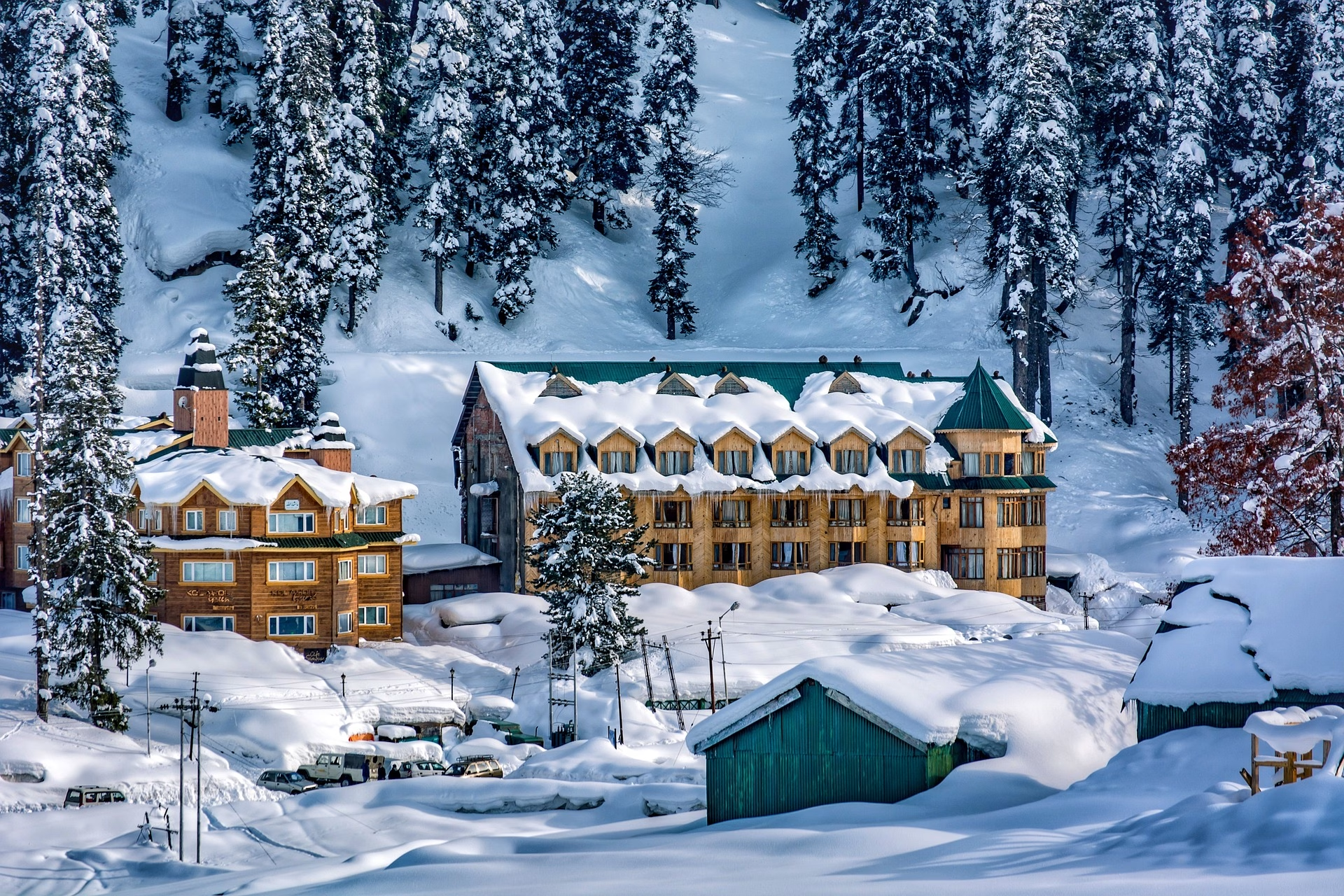
After breakfast, you'll embark on a Gondola ride on the world’s highest cable car journey. Later, you’ll spend the rest of your day exploring notable sites such as the Golf Course, Maharaja Palace, and Children’s Park while enjoying scenic views of Gulmarg. Meals: Breakfast & Dinner Night: Stay at the Hotel in Gulmarg
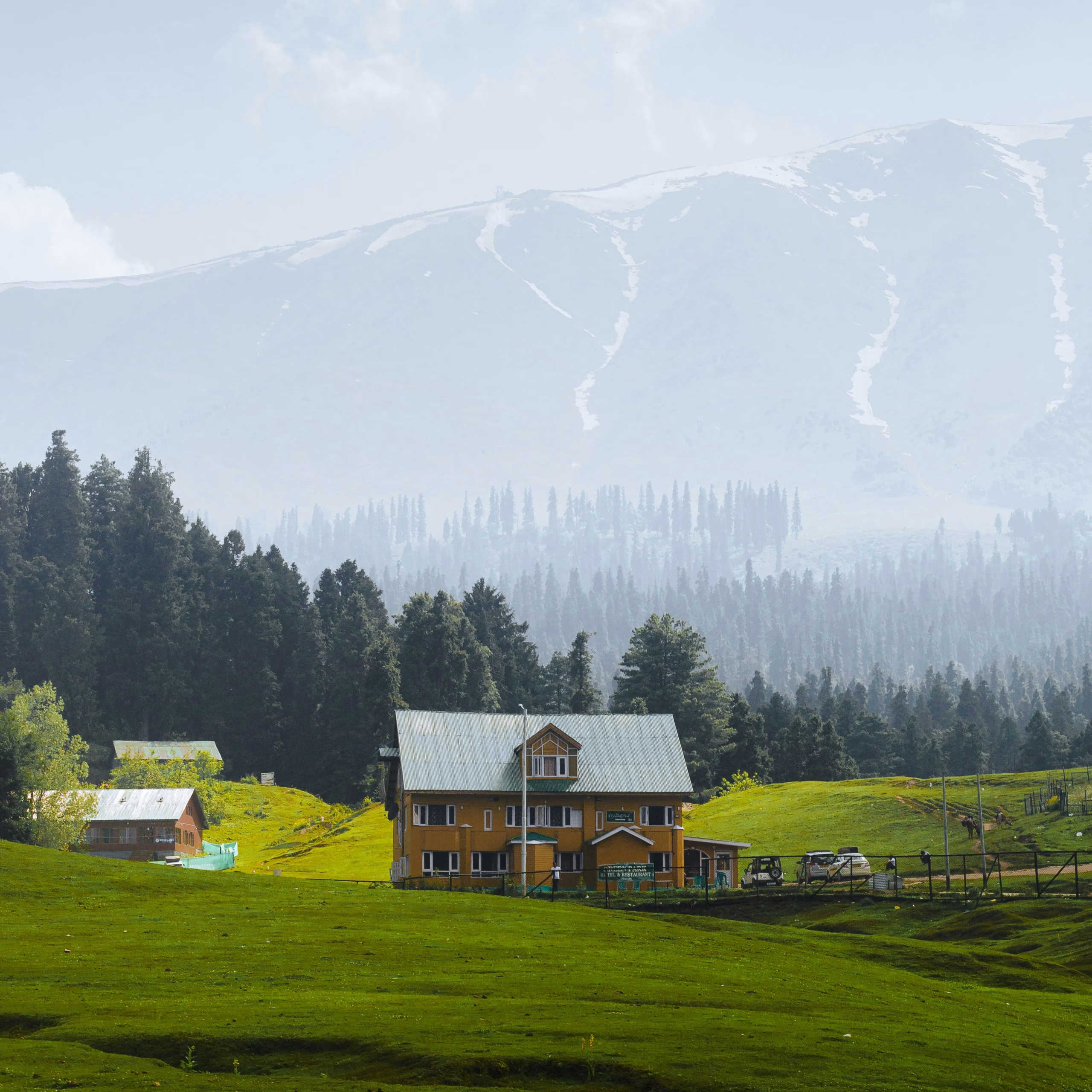
After breakfast, we will head out on a village tour, travelling 13 km downhill to the picturesque village of Drung, known for its stunning frozen waterfall, which can be visited by Union Cab at your own cost. After exploring the village, we will return to Gulmarg. Meals: Breakfast & Dinner Night: Stay at the Hotel in Gulmarg
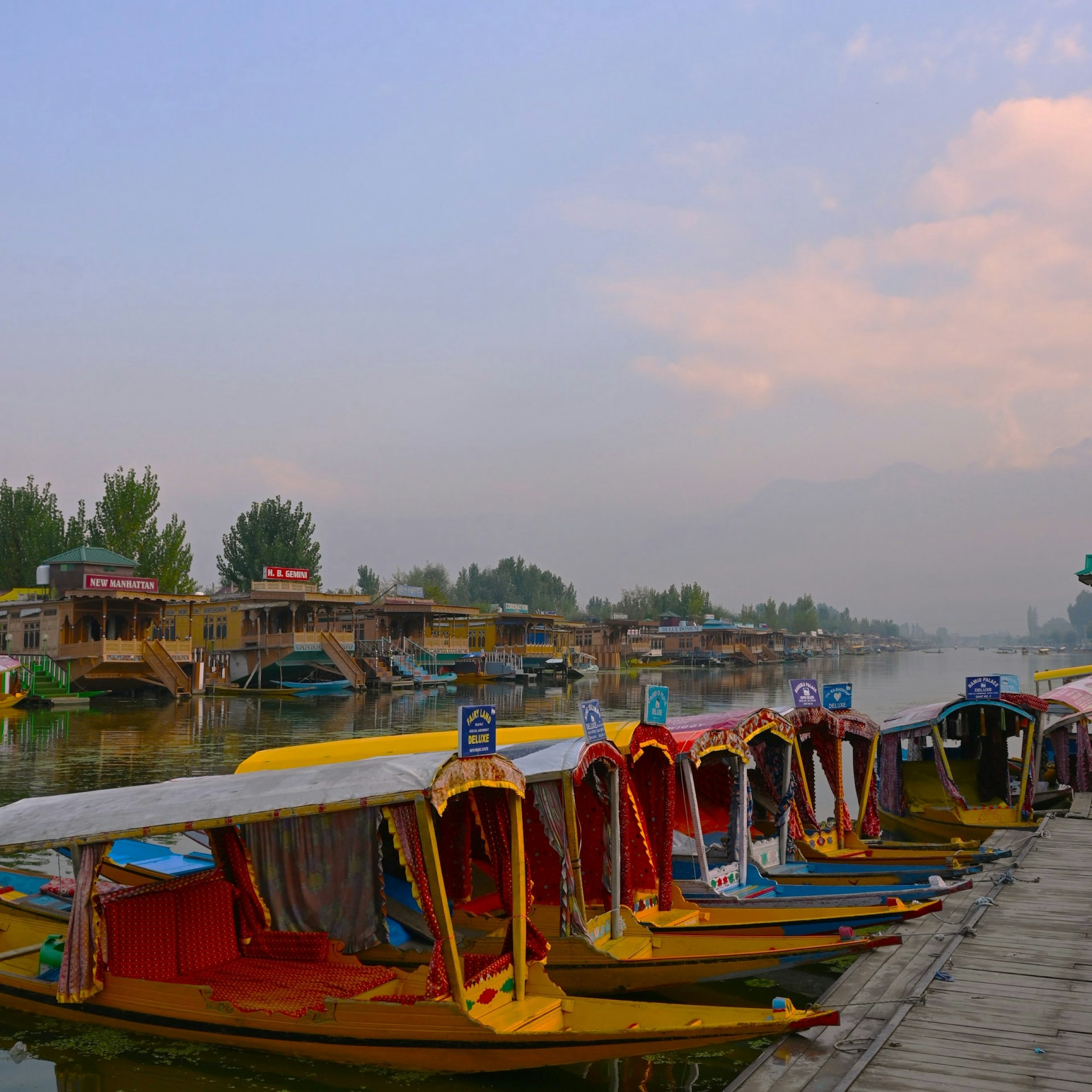
After breakfast, you will head out for a skiing session, where our instructor will teach you some tips and tricks. After a few hours on the slopes, you will depart for Srinagar. Upon arrival, you will be escorted to your hotel or houseboat for an overnight stay. Meals: Breakfast & Dinner Night: Stay at the Hotel in Srinagar/Houseboat in Dal Lake
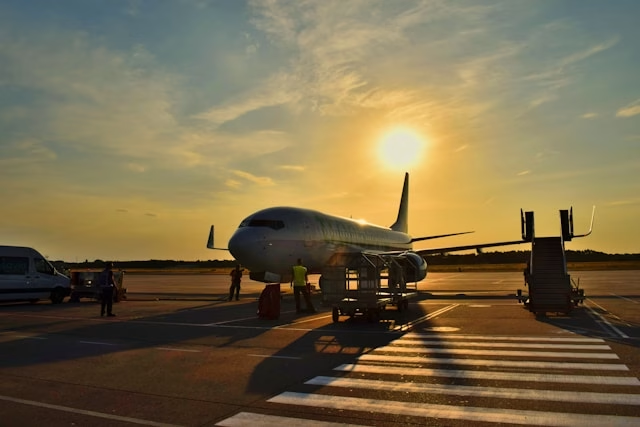
After breakfast, you will enjoy a one-hour Shikara ride on the serene Dal Lake, which offers views of the vegetable market, Char Chinar, and Nagin Lake. Following the ride, our car will pick you up and take you to Srinagar International Airport, where you will return home. Meals: Breakfast Night: Nil
| Location | Places to visit |
| Srinagar | Nishat Bagh, Shalimar Bagh, Pari Mahal, Shankaracharya Temple, Tulip Garden, Dal Lake, Etc. |
| Gulmarg | Gulmarg Gondola ride, Golf Course, Drung waterfall. |
Note:
We understand that plans can change, but the booking amount is non-refundable due to the costs we incur in preparing for your tour or activity. If you wish to reschedule for a different date, we'll adjust it to the same package, providing you with the necessary flexibility. If you have paid the total amount but cancelled the package. You will be provided with a refund, as mentioned below:
Tours or activities may be cancelled due to unforeseen events beyond our control, weather conditions such as heavy rain or storms, or government restrictions like sudden closures of specific areas. In such a scenario, we will provide an alternate tour or activity. However, no refunds will be provided.
The region of Jammu and Kashmir, before 1947, spanned an impressive 86,024 square miles, stretching from latitudes 32° 78′ to 36° 58′ N and longitudes 73° 27′ to 80° 72′ E. This vast territory encompassed not only the Jammu region but also areas such as Ladakh, Gilgit, Hunza, Nagar, Punial, and Yasin. Furthermore, the tiny State of Chitral, located northwest of Gilgit, was historically a tributary to the ruler of Kashmir. The present shape of the State owes much to Maharaja Gulab Singh Ji, the founder of the Dogra Hindu dynasty in Kashmir, whose efforts in the second half of the 19th century consolidated these regions into a single dominion.
Historical Overview of Kashmir (Before 1947)
Nestled amidst the grandeur of the Himalayas, Kashmir is often hailed as one of the most beautiful places on Earth. Unlike much of India, Kashmir has a recorded history that extends far into the past, in contrast to Alberuni’s observation in the 11th century that Indians generally lacked a sense of historical record. Kashmir also boasts a legacy of distinguished historians, including Kalhana, author of the Rajatarangini, and Bilhana, a Sanskrit scholar who composed the Vikramankadeva-charity in honour of King Vikramaditya VI of Kalyana.
The name “Kashmir” is said to derive from “Ka” (water) and “Shimir” (to desiccate), referencing a tradition that the region was once a lake drained by the ancient saint Kashyap. Historically, it became part of the Mauryan Empire under Ashoka, who founded Srinagar around 250 BCE. Buddhism flourished in the region during this period, particularly under the Kushans. The third Buddhist council was held in Kashmir during Kanishka’s reign, corroborated by the accounts of the Chinese traveller Hien Tsang in the 7th century CE. Despite the influence of Buddhism, Hinduism remained the dominant religion.
Dynastic Eras
In the 7th century CE, the Karkota dynasty, established by Durlabhavardhana, rose to prominence. Lalitaditya Muktapida, a notable ruler of this dynasty, constructed the renowned Martand Sun Temple. The Karkotas dynasty succeeded the Utpala dynasty in 855 CE, under which Avanti Verman restored political and economic stability to Kashmir. Queen Didda, a widow of the Gupta lineage, ruled effectively until 1003 CE despite her controversial personal life, paving the way for the Lohara dynasty.
Udyan Dev was the final Hindu monarch of Kashmir, but his actual power largely rested with his queen, Kota Rani, who effectively governed as the de facto ruler. Known for her bravery and political acumen, her death in 1339 marked the end of Hindu rule and the establishment of Muslim dominance in Kashmir under Sultan Shams-ud-Din’s dynasty, which ruled for 222 years. Sultan Zain-ul-Abidin, a prominent figure of this era, presided over a cultural and political renaissance in the region.
Kashmir Under Foreign Rule
Kashmir was annexed into the Mughal Empire in 1586, ending its independence. Later, in 1757, the region came under the control of Ahmed Shah Durrani, an Afghan ruler. In 1819, Ranjit Singh integrated Kashmir into his Sikh Empire. However, following the Anglo-Sikh wars, British forces assumed control and, under the Treaty of Amritsar, sold Kashmir to Gulab Singh for 75 lakh rupees. This transaction granted Gulab Singh full authority over the region, which he expanded by annexing Ladakh. His successors included Maharaja Ranbir Singh (1857-1885), Maharaja Partab Singh (1885-1925), and Maharaja Hari Singh, who ruled from 1925 until 1950.
Political Awakening
In 1932, Sheikh Abdullah founded Kashmir’s first political party, the All Jammu & Kashmir Muslim Conference, later renamed the National Conference in 1939. This party remains a significant political entity in modern-day Kashmir.
After India gained independence in 1947, Maharaja Hari Singh, the ruler of Jammu and Kashmir, opted to remain neutral, neither joining India nor Pakistan. However, when Pakistani forces invaded the region in 1948, the Maharaja sought India’s military aid. In return, he signed the Instrument of Accession, formally merging Kashmir with the Indian Union and integrating Kashmir into the Indian Union. Indian troops intervened, and fighting ceased in 1949 following a United Nations-mediated truce. This agreement established the first Line of Control (LoC), which divided the territory between India and Pakistan.
By 1956, Jammu and Kashmir became an official part of India under a newly framed Constitution. However, areas captured by Pakistan during the 1948 conflict, known as Azad Kashmir, remained under its control. The situation grew more complex in 1959 when China occupied the Aksai Chin region of Ladakh. The situation intensified in 1963 when Pakistan and China reached a border agreement under which Pakistan handed over portions of territory claimed by India to China.
In 1965, India and Pakistan clashed over Kashmir once more, but the hostilities were brought to a halt through a United Nations-mediated ceasefire. The following year, Indian Prime Minister Lal Bahadur Shastri and Pakistani President Ayub Khan signed the Tashkent Agreement, committing to peaceful conflict resolution. However, in 1971, another war erupted, this time triggered by the independence movement in East Pakistan. With India’s support, East Pakistan became Bangladesh. This war concluded with the Shimla Agreement of 1972, where Indian Prime Minister Indira Gandhi and Pakistani President Zulfikar Ali Bhutto agreed to settle disputes bilaterally.
During the 1970s and early 1980s, Kashmir experienced a boom in tourism, attracting visitors from across the globe to its breathtaking scenery and rich cultural heritage. However, this period of peace ended in the late 1980s and 1990s, when separatist militancy and terrorism surged in the region. Armed insurgents and foreign militants caused widespread violence, leading to significant casualties and the displacement of many Kashmiri families.
About Srinagar
Srinagar, the capital of J&K, is situated in the heart of the Kashmir Valley along the scenic banks of the Jhelum River. Four districts and Ladakh UT surround the city. To the north lies Ladakh, Ganderbal to the east, Pulwama to the south, and Budgam to the northwest. Located 1,585 meters above sea level, Srinagar is renowned for its beautiful gardens, lakes, houseboats, traditional Kashmiri handicrafts, and dried fruits. The Jhelum River, known as Vyath in Kashmir, flows through the city, winding through the valley and eventually merging with Dal Lake. Srinagar is also famous for its nine historic bridges, connecting the city’s two parts.
Hokersar, a wetland located 14 km (8.7 miles) north of Srinagar, is an essential site for migratory birds. During winter, thousands of birds migrate from Siberia and other regions to Hokersar, making it a key stopover for birds travelling between Siberia, Central Asia, and Kashmir. The wetland, covering an area of 13.75 km² (5.31 sq mi), includes both lake and marshy areas and is among the most accessible and well-known of Kashmir’s wetlands, alongside others such as Hygam, Shalibug, and Mirgund. The wetlands are critical in supporting a large population of wintering, staging, and breeding birds.
Bird species found in Hokersar include migratory ducks and geese, such as the Brahminy duck, tufted duck, gadwall, garganey, greylag goose, mallard, common merganser, northern pintail, common pochard, ferruginous pochard, red-crested pochard, ruddy shelduck, north shoveller, common teal, and Eurasian wigeon.
How to Reach Srinagar
By Air:
Sheikh ul Alam Airport (IATA: SXR) is an international airport serving Srinagar. It offers regular flights connecting the city to major cities like Delhi, Mumbai, and Chandigarh. The airport is conveniently located just 15 km from the city centre.
Nearest Airport: Sheikh ul Alam Airport, Srinagar
By Train:
To reach Srinagar by train, travellers must first reach Banihal Railway Station. From there, they can hire taxis or cabs for the onward journey.
By Road:
Srinagar, the summer capital of Jammu and Kashmir, is well-connected by road to several key cities, including Delhi (876 km), Chandigarh (646 km), Leh (424 km), and Jammu (258 km). Regular buses and taxis make it easy to reach Srinagar.
Shikara Ride on Dal Lake, Kashmir
A Shikara ride on Dal Lake in Kashmir offers a peaceful journey combining stunning natural beauty and cultural significance. As you glide through the calm waters in a beautifully crafted wooden boat, you’ll be captivated by the reflections of the Pir Panjal mountains, the unique houseboats, and the lively surroundings. The experience offers a glimpse into Kashmir’s rich traditions, and the boats showcase the region’s exquisite craftsmanship and heritage.
Best Time to Visit:
Gulmarg: The Meadow of Flowers
In the heart of the stunning Himalayan range, Gulmarg, which translates to “Meadow of Flowers,” is a picturesque hill station around 60 kilometres from Srinagar. The drive takes around an hour and a half, offering panoramic views. Known for its lush meadows and snow-covered mountains, Gulmarg has always been a favourite destination for travellers.
Main Attractions
A significant highlight of Gulmarg is the Gulmarg Gondola, one of the world’s highest cable cars. The ride is divided into two phases:
Tourists can also explore the enchanting Strawberry Valley, the rugged terrain of Leopards Valley, and the peaceful Al-Pathar Lake, a stunning frozen lake that can be reached via horse ride or a trek from Kongdori.
In winter, Gulmarg transforms into a snow-covered paradise, attracting skiing enthusiasts to its pristine slopes. The location is ideal for experienced skiers looking for a thrilling challenge. The festive atmosphere during this time, including events like White Christmas and vibrant New Year celebrations, adds to the destination’s charm.
Historical Background
Gulmarg is rich in history. It once served as a retreat for royalty like Yousuf Shah Chak and Emperor Jahangir. Initially known as Gaurimarg, named after Goddess Parvati (consort of Lord Shiva), Yousuf Shah Chak later renamed the area Gulmarg, meaning “the place of roses. “
In the early 20th century, the renowned explorer Sir Marc Aurel Stein often visited Gulmarg to rest between his Central Asian expeditions. It became a popular summer destination for British officers and their families during British rule.
How to Reach Gulmarg
Apharwat Peak
Situated 4,200 meters (14,000 feet) above sea level, Apharwat Peak is one of the most striking attractions in Gulmarg. Located near the Line of Control with Pakistan, it offers stunning panoramic views and remains snow-covered for much of the year. This peak is the centre of several winter sports activities in Gulmarg, particularly skiing.
The beauty of Apharwat is genuinely exceptional. Surrounded by vast snowy meadows and towering, snow-capped mountains, its remote location near the Line of Control enhances its appeal. The peak is a popular destination for honeymooners and thrill-seekers, drawing visitors who want to experience exhilarating winter sports amidst one of Kashmir’s most beautiful settings.
Apharwat is approximately 13 kilometres from Gulmarg, and the most convenient way to reach it is by taking the Gondola cable car. The Gondola operates in two phases:
Visitors can also use human sledges to explore the slopes further.
Key Highlights:
Alpather Lake
Nestled between towering mountains and lush green meadows blanketed with wildflowers, Alpather Lake in Gulmarg is a mesmerising destination. The lake remains frozen for most of the year, and even by mid-June, it often still shows signs of ice. From May to September, the lake unveils its clear blue waters during the summer months, though white icebergs can still be spotted floating on its surface for much of the year.
What makes Alpather Lake truly special is its stunning backdrop. Located about 13 kilometres from the main town of Gulmarg, it draws both locals and tourists, especially on pleasant days when it becomes a popular picnic spot. Whether frozen or thawed, the lake is framed by towering, snow-capped peaks, creating a perfect setting for photographs. The sight of a snow-covered landscape with patches of green peeking through is especially magical during the winter months. The frozen lake is genuinely awe-inspiring for those who have never experienced snow.
Things to Do at Alpather Lake:
Summer Activities in Kashmir
During the summer, Gulmarg becomes a vibrant hub, offering a variety of activities for visitors to enjoy. Whether it’s a scenic ride on the Gondola or trekking through the stunning landscapes of Kashmir, there’s something for everyone. The local festivals provide a chance to experience the region’s traditional crafts and music, while the bustling markets are perfect for picking up unique, handmade souvenirs. Visitors can also unwind by the crystal-clear lakes or have a relaxing picnic in the serene natural surroundings.
Summer Culinary Delights
Try a refreshing Kashmiri Kahwa, a fragrant green tea infused with saffron, almonds, and cardamom to cool off. On warm summer evenings, enjoy a savoury treat: Chaman, fried cottage cheese cubes cooked in a rich curry sauce and served with rice or chapati.
Autumn: The Golden Season (September to November)
From September to November, Kashmir is transformed into a golden wonderland. In the local language, autumn is known as Harud. During this time, trees shed their leaves, turning the valley into a breathtakingly picturesque landscape. With temperatures ranging from 9°C to 23°C, this season offers the perfect climate for sightseeing and outdoor activities.
Autumn Activities in Kashmir
Autumn is an ideal time to visit apple orchards and join locals in picking fresh apples. The Saffron Festival in Pampore is another highlight, where you can witness the beautiful saffron blooms and learn about the local farming traditions. The stunning autumn foliage also creates excellent photography opportunities and leisurely drives around the valley.
Autumn Culinary Delights
Try Gushtaba, a creamy meatball curry perfect for cooler autumn weather. These rich and warming dishes are also popular. Another popular dish is Kahwa Kebab, tender meat grilled with aromatic spices. It is often paired with fresh fruits for a satisfying meal.
Winter: A Snowy Wonderland (December to February)
From December to February, Kashmir’s winter becomes a snowy retreat, attracting snow lovers and adventure enthusiasts. The region becomes a winter wonderland, with temperatures between -2°C and 12°C. Gulmarg is particularly popular during this time for winter sports like skiing and snowboarding, drawing visitors from across the globe.
Winter Activities in Kashmir
Winter is the season to embrace Kashmir’s snowy beauty. Try snowshoeing through the snow-covered landscapes or riding a horse-drawn sleigh. Gulmarg offers thrilling skiing opportunities, while the peaceful valleys provide an idyllic winter escape for those seeking tranquillity.
Famous Dishes of Kashmir and Ladakh Influenced by diverse cultures, Kashmiri cuisine offers a rich array of flavorful dishes.
Here are some must-try dishes:
Rogan Josh: A spicy lamb dish with yoghurt and browned onions, a Mughal legacy.
Modur Pulav: Sweet rice with saffron, milk, ghee, and dry fruits.
Matschgand: Spicy minced meatballs cooked in red gravy.
Yakhni: Lamb cooked in yoghurt with aromatic spices.
Dum Olav: A vegetarian potato curry with yoghurt and spices.
Kashmiri Muji Gaad: Fish with radish or lotus stems, typically served during festivals.
Aab Gosht: Mutton stew made with milk and spices.
Goshtaba: Minced mutton in rich yoghurt gravy, a royal dish.
Lyodur Tschaman: Cottage cheese cooked in creamy turmeric gravy.
Skyu: Ladakhi wheat dough dish with meat and vegetables.
Khambir: Ladakhi whole wheat bread, served with butter tea.
Herbal Tea: A warming, health-boosting green tea with butter and salt in Ladakh.
Paba: Peas and wheat-based dough, a nutritious Ladakhi dish.
Tangdur: Buttermilk mixed with wild vegetables, eaten with Paba.
Thenthuk: Noodle soup with vegetables and meat, typical in Ladakh.
Butter Tea: Tibetan drink made with butter and salt, often with yak meat.
Wazwan is a grand Kashmiri multi-course feast featuring Rogan Josh and Yakhni dishes.
Kashmir, often called "Paradise on Earth," is home to breathtaking destinations like Srinagar, with its serene Dal Lake and vibrant Mughal gardens; Gulmarg, known for its lush meadows and the iconic Gondola ride; and Pahalgam, featuring the tranquil Aru Valley, scenic Betaab Valley, and picturesque Chandanwari.
Indian citizens need no permit to visit Kashmir. However, they may need a valid passport, PAN card, Aadhar card, or driving license and a ticket printout. Permits may also be required for trekking in sensitive border areas. Foreign nationals need a visa and possibly additional licenses. An Inner Line Permit is necessary for regions like Ladakh, and trekking permits are required for specific areas.
Snow begins falling in Kashmir around late October at higher altitudes like Gulmarg and Sonamarg. However, the primary snowfall season typically occurs between December and February, with Gulmarg, Pahalgam, and Sonamarg being the top spots for snowfall enthusiasts.
The nearest railway stations to reach Kashmir by train are Jammu Tawi (271 km) and Udhampur (200 km), both well-connected to major cities. You can take private cabs or state buses from these stations to Srinagar. The New Delhi to Srinagar Vande Bharat Sleeper train will begin operations in January 2025. This direct, semi-high-speed rail service will cover over 800 kilometres in under 13 hours, providing modern amenities and a more comfortable travel experience.
The cost of a Kashmir trip varies depending on the type of package and amenities
| 4 Days, 3 Nights | ₹14,500/- PP |
| 5 Days, 4 Nights | ₹18,900/- PP |
| 6 Days, 5 Nights | ₹23,500/- PP |
| 7 Days, 6 Nights | ₹28,500/- PP |
| Up to 8 Days | Upto ₹34,000/- PP |
The cost of a trip to Gulmarg depends on the duration of your stay. It typically ranges from INR 10,000 to INR 35,000. For an ideal 7-day trip, the cost is approximately INR 30,000.
Yes, there is an entry fee for the Gulmarg Gondola ride. The ticket prices are as follows:
Yes, the Gondola ride is considered very safe. A 2022 global analysis by Tüv Süd, a testing and certification company, revealed that riding a cable car is more than ten times safer than travelling by car and flying.
The cost of food in Kashmir depends on where you choose to eat. A simple meal at a local restaurant typically costs between INR 200 and INR 500 per person. If you opt for a mid-range restaurant, the cost can range from INR 500 to INR 1000 per person.
| Period | Price |
| 1 Hour | ₹700/- |
| 2 Hours | ₹1,500/- |
| 3 Hours | ₹2,300/- |
| Upto 3+ hours | ₹4,000/- |
| Houseboat Category | Price (INR) |
| Deluxe Houseboat | ₹3,000 - ₹5,000 |
| Super Deluxe Houseboat | ₹5,000 - ₹6,000 |
| Luxury Houseboat | ₹8,000 - ₹22,000 |
| Occupancy Type | Number of People | Extra Costs |
| Normal Occupancy | 14 Adults | |
| Maximum Allowed | 28 (max 21 adults) | |
| Extra Adult Cost | ₹900 | |
| Extra Child Cost | ₹800 |
Leave a review